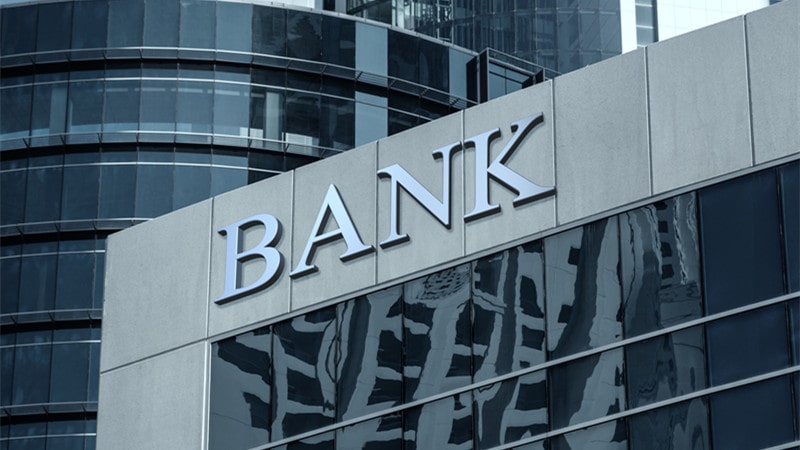We live in a dynamic world where new innovations are starting to reshape the old principles we live in. Therefore, new industries need to adapt to such changes in order to survive and future-proof their system.
Banks are one of the oldest institutions in this world, and they also are facing some risks. But don’t get this the wrong way and let this information urge you to rush to the bank to withdraw all your money.
There is a risk in every entity. The goal is to manage those risks so that they are controlled and won’t pose an existential issue.
On top of that, ever since COVID-19 hit, we have lived in a world with high inflation, monetary instability, and interest rates going through the roof just to slow down the artificially pumped economy with trillions of dollars printed through these times.
Last year, some banks in the US and Europe faced a big financial crisis and even declared bankruptcy, which shed a lot of fear in the banking sector.
So, as we move to 2024, let’s highlight all the biggest risks that banks face.
Cybersecurity
One of the biggest threats that banks face at the moment is cybersecurity. The cyber-criminal is rising and these attacks are becoming more dangerous for people’s information and data.
At the moment, we don’t have the right tools to fight these cyber threats, especially not when we talk about big data and storage. Most of these cyber-criminals are finding endless possibilities to breach the data and put everyone at risk.
But for banks, cyber-attacks are not only about financial loss. They will lose customer trust which can cause permanent reputational damage for the bank that is hard to recover from.
The cyber attacks that banks face are different ranging from credential theft, and phishing, to sophisticated ransomware attacks. So, while the digitalization of banking services sounds good and comes with many benefits for people, it also increases the risks of cyber attacks.
The cybersecurity threat is a big one, and we still don’t have a solution to this problem. Big companies like Meta, are also experiencing breaches, and we even had a cyber attack on a Las Vegas casino recently.
In other words, banks should focus on improving their data storage systems and making them more secure than ever before.
The Crypto-asset Conundrum
Another emerging concern is the risk associated with crypto-assets. The FDIC’s 2023 Risk Review highlighted crypto-asset risk as a new section, reflecting the growing interest and integration of cryptocurrencies in the banking sector.
Some people also see a lot of disadvantages to keeping money in the bank, especially when compared to crypto. However, crypto is still a new asset that nobody really knows where it is heading.
While crypto-assets offer innovative opportunities for financial services, they also bring volatility, regulatory uncertainty, and challenges in risk management.
At the moment, there is a lot of money flowing from banks to crypto assets, and this is a risk that every bank should consider. Even though crypto assets are not globally regulated yet, banks need to create a future-proof strategy that includes some form of crypto assets just to future-proof their system.
The Climate Change Challenge
Climate change is a problem not just for the banking sector but for all industries. Most Bank Chief Risk Officers have evaluated that this is their top emerging risk, that comes with severe and extreme weather events, and other smaller risks that emerge as we move towards a lower-carbon economy.
But we would argue differently. Yes, improving the banking operations and making them more sustainable is important, but it doesn’t come as a high risk for the existence of banks. Even those that will take more time to adapt to such changes won’t have a big impact on their profits.
The Transformation to Online Banking
In recent years, we’ve seen a big transformation in the banking sector that includes online and mobile banking. These are two important factors for every bank, and in order to keep up with modern times, they have to include these services in their offering.
We already have online banking platforms like Genome, that provide modernized banking solutions and will have an impact on traditional old-school banks, as you can see here: https://genome.eu/
This means that the banks that won’t evolve digitally will be left behind as people will lose interest in such banks. So, when choosing a bank, try to find one that is future-friendly and always follows the latest technological trends.
Navigating Market and Credit Risks
Market and credit risks have always been part of the banking risk portfolio, but the context in which banks operate is changing. Disruptions in commodity markets, shifts in consumer behavior, and the potential for economic downturns necessitate a fresh look at these traditional risk categories.
Regulatory and Compliance Pressures
Banks are also facing increasing regulatory and compliance pressures. This includes adhering to fair lending regulations in partnerships with fintech companies and managing the risks associated with government programs and contracts.
Compliance is not just a matter of legal obligation but is integral to maintaining customer trust and the bank’s reputation.
The Politics and Policy Landscape
Political and policy changes, especially those addressing historical inequalities in housing and lending practices, also pose challenges for banks. Adapting to these changes requires banks to be agile and proactive in understanding the implications of new laws and regulations.




